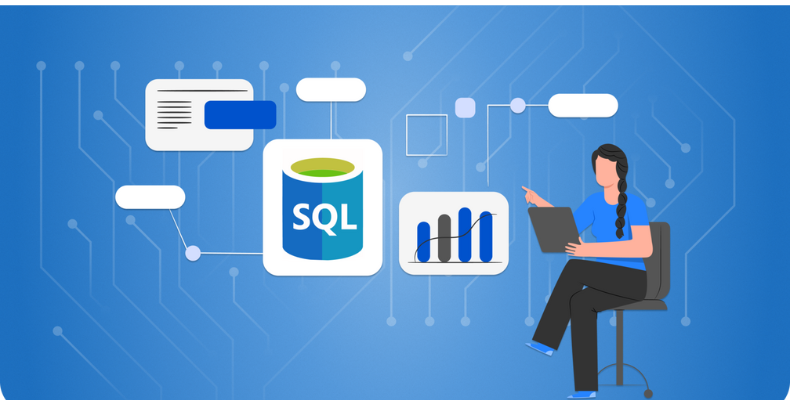
Oracle Database is a relational database management system (RDBMS) developed by Oracle Corporation. It is renowned for its sophisticated features, scalability, and resilience. To manage this type of network effectively, the system relies on a vast and globally distributed infrastructure. It enables efficient database management with features for security, scalability, and streamlined patching/upgrades.
Banking, telecommunications, healthcare, and e-commerce are among the industries that use it. It handles complex transactions securely and reliably. Learning more about Oracle can help one become more proficient in this field and pave the way for jobs in enterprise application development, database administration, and data analysis. Training facilities such as FITA Academy facilitate career placements and provide practical instruction to master Oracle properly.
What is Oracle Database?
This program was created and markets Oracle Database, a potent object-relational database management system (RDBMS). It was first made available in 1979. It has developed into one of the most reputable and extensively utilized database systems around. The ability of this technology to effectively handle massive amounts of data is well known. Because of this, it’s a fantastic option for businesses in various industries. When a working professional wants to upskill their knowledge, they can enrol in the Oracle Course in Chennai and learn about this, so they can proceed to the next role in their department.
This database offers a key benefit: scalability for handling massive data volumes. You can manage data across a wide range of applications, from simple solutions to enterprise-level systems. It also delivers high security and reliability. Therefore, It supports mission-critical workloads and provides various editions to meet different needs.
- Standard Edition – for small to medium businesses,
- Enterprise Edition – advanced features for large deployments
- Express Edition (XE) – free for learners and small apps.
Oracle Database Architecture Explained
Architecture, made up of two components—the instance and the database, is incredibly robust and dependable. These are evident in basic points. Which terms are crucial, and how will they be applied?
- An instance consists of memory structures such as the System Global Area (SGA) and background processes,
- The database comprises datafiles, control files, and redo logs.
- The SGA handles shared memory for all sessions, and the Program Global Area (PGA) manages session, specific memory.
- Background processes like DBWR, LGWR, SMON, and PMON perform essential tasks like writing data to disk and managing system recovery.
Enterprise Resource Planning (ERP), Customer Relationship Management (CRM), data warehousing, and finance systems are just a few of the real-world applications that employ the Database. It boasts a feature, rich surroundings and a sturdy architecture. Because of this, it is an excellent option for businesses that want high performance data management and security solutions. Aspiring DBAs, developers, and IT professionals hoping to work in data-driven professions might alter their employment search by learning about Oracle Database.
How Data is Stored and Retrieved
This coding program is structured similarly to a library. A tablespace is a logical storage container that maps to one or more datafiles. Its contents are divided into blocks, extents, and segments. This format has a book like appearance. By learning Oracle from the Training Institute in Chennai, students and working professionals can develop knowledge of its features and handle complex web applications.
Using Oracle requires commands such as
- INSERT
- UPDATE
- DELETE
- SELECT
With the commands, the Oracle finds the data, processes the request, and returns the result immediately. Similar to a bookmark, an index expedites searches. uses restrictions to preserve data integrity as well. Additionally, performance optimization is used to speed up the process and produce results more rapidly.
Transaction Management
The database follows ACID properties to ensure every transaction is reliable and error free.
- Atomicity
- Consistency
- Isolation
- Durability
Oracle guarantees that data remains accurate and consistent, even when a transaction is not fully completed. To ensure data recovery in the event of a system crash, it employs redo logs, while undo logs allow users to roll back transactions as they make changes. Additionally, Oracle uses intelligent controls to manage concurrency and prevent data conflicts.
To further maintain data integrity, it applies locking techniques, such as table-level and row-level locks, which prevent two users from modifying the same data at the same time. As a result, even during high-traffic situations, Oracle ensures that users receive accurate and consistent data throughout transactions.
Tools and Utilities to Manage Database
Let’s explore some of the tools, such as SQL Plus and Oracle SQL Developer, that database administrators (DBAs) use to manage the Oracle database. These tools help DBAs efficiently complete daily tasks. They also make it easier to write and execute SQL queries, improving overall productivity and database management.
Key Tools:
- SQL Plus is used to execute SQL and administrative commands.
- A developer is a graphical user interface (GUI) application for database management and administration.
- Enterprise Manager is a web based tool for comprehensive database monitoring.
- Data Pump/Export-Import: This utility enables you to transfer data between databases efficiently.
- Recovery Manager (RMAN) automates backup and recovery.
From data storage to intricate transaction management, Oracle Database is a strong and organized system. In this blog, we have seen about Oracle and why it is popular among other databases. Anyone hoping to pursue a career in database creation or management must have a solid understanding of its architecture, tools, and fundamental operations, from setup to data handling and management.
